
views
Covering up Scars

Cover your arms with long sleeves. The easiest solution for covering up scars is to wear long sleeves that cover your arms. When it's hot outside, look for cool fabrics like linen that breathe, or UV protecting arm sleeves that cover the arms while cooling your skin. UV protection sleeves can also shield your skin from the sun and help it heal. You can also look for shirts with sheer, long sleeves for hot days or try mesh sleeves to hide scars.
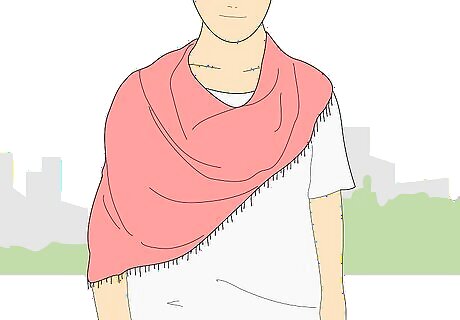
Wear a light scarf in public places in the summer months. It can be uncomfortable to wear long sleeves outside when it's hot. Keep a scarf or light sweater with you that you can throw on in places like the bus, the grocery store, or other public, indoor places that can be a little cooler. A scarf can hide scars on your upper arms and shoulders. If you have scars on your lower arms or wrists, try a light sweater or jacket instead. This can help you avoid questions from others while you're in public.
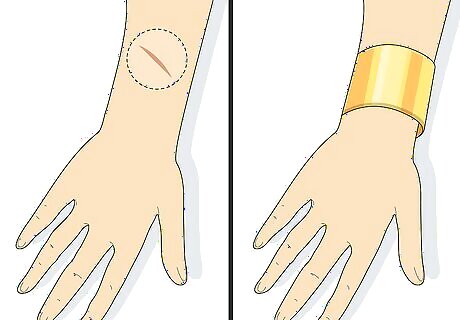
Find jewelry that covers your scars. If your scars are at your wrists, try a watch or a wide cuff bracelet. This tends to work best with smaller scars. If your scars are still healing, cover them with a bandage so that they don't get irritated by the jewelry. Alternatively, if you just want to cover up a scar temporarily, try a temporary tattoo or henna art.
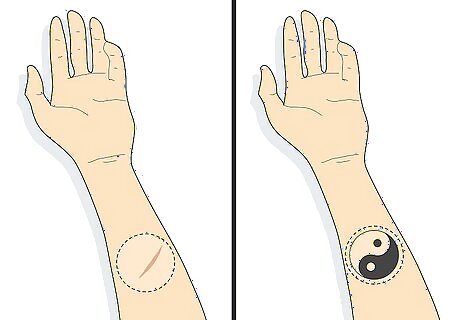
Consider a tattoo to cover your scars. Not all scars can be covered by tattoos, and some people find tattoos to be a more painful reminder than scars themselves. However, others find the act of choosing permanent artwork for their bodies to be empowering. Keep in mind that tattoos are permanent, so be sure to go to a reputable shop work with your artist to come up with a suitable design together. Make sure your scars are completely healed before tattooing over them. In most places, you need to be over 18 to get a tattoo.
Using Cosmetics to Cover Scars
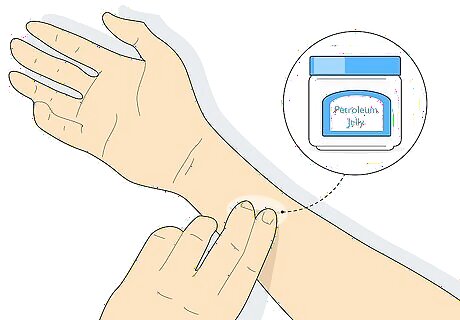
Use oils and creams to reduce the appearance of scars over time. Depending on how fresh your scars are, there are a lot of different creams, ointments, and oils that can minimize their appearance. For fresh scars, it's important to keep your skin hydrated and keep a barrier between the wound and the air. Petroleum jelly is a low-cost option for fresh scars. Products that contain silicone, collagen, retinol/vitamin C, and SPF can help heal old scars. Ask a dermatologist for specific recommendations for minimizing your scars. Protect you skin from UV rays with sunscreen.
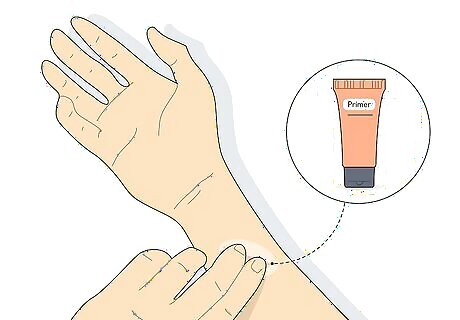
Start with a primer if you are going to apply makeup. Primer helps your makeup stay on longer and creates a barrier between your skin and the makeup. Apply a generous layer of primer over your scar.
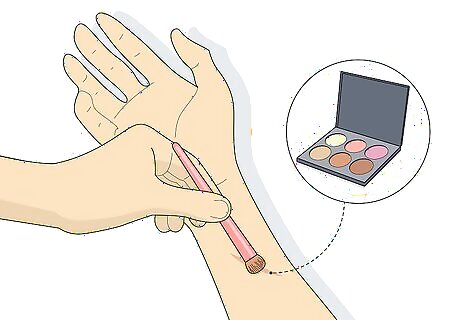
Use a color-correcting concealer specific to the color of your scar. In order to block out your scar most effectively, look closely at the color of your scar and choose a concealer in a complementary color. You may need a combination of concealers if your scar is more than one color. Apply the concealer over the primer and blend it in using a brush or a sponge. The best way to cover scarring is to use a heavier, thicker consistency when it comes to a concealer. If your scar is red, use a green concealer. If your scar is purple, use a yellow concealer. If your scar is brown, use a pink concealer. If your scar is black or blue, use orange concealer.
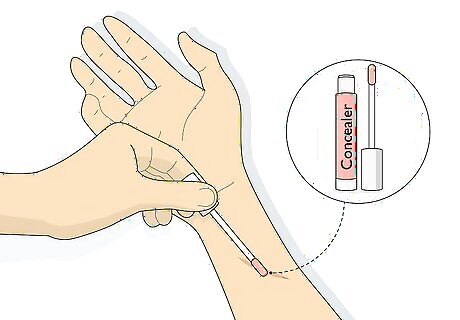
Layer a liquid concealer on if you need more coverage. Look for concealers specifically formulated for the body. These products tend to be thicker than concealer you would use on your face, as well as water resistant. Choose a concealer that matches the color of your skin to make your makeup look more natural. A liquid concealer will be easiest to apply and blend in, as opposed to cream or stick concealer. Apply the concealer over the scar in a patting motion with either a brush or a beauty sponge, being mindful not to wipe the product across which can remove it. This way, it will also look more natural.
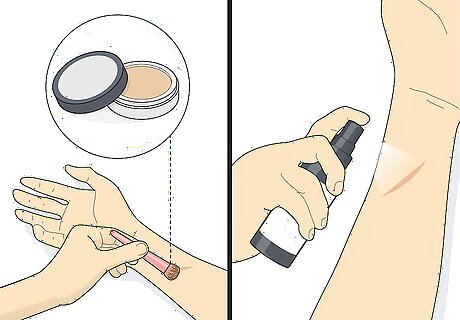
Set the makeup with a translucent powder and setting spray. To prevent your makeup from rubbing off throughout the day, use a setting powder. Use a makeup brush to apply an even layer of powder over the concealer. A setting spray on top of the powder will add an extra layer of security. This method won't completely cover all scars, but it will make all scars less noticeable.
Treating Scars Medically
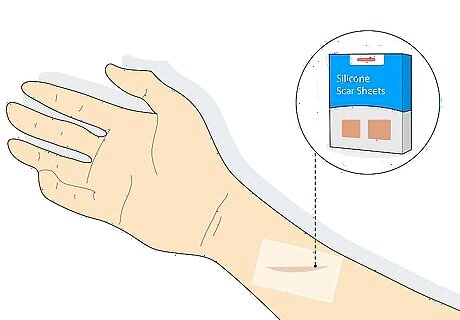
Place silicone sheets over your scars for 12 hours a day for 3 months. A dermatologist can help you find a silicone treatment that can minimize scars over time. To use this treatment, you will place a sheet or gel with silicone over your scar and leave it in place for around 12 hours. After several months, your scar will soften and flatten. The sheets are usually reusable.
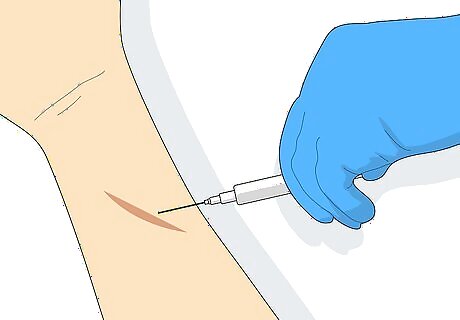
Ask your dermatologist about steroid treatments. Steroid treatments can help heal keloid scars, which are large, firm, rubbery patches of skin, or hypertrophic scars, which are raised scars. A dermatologist can give you injections of steroids to flatten the scar and reduce any swelling. Your dermatologist will usually start with 3 treatments to see how your skin and body react to the steroids and then assess how many treatments you will need.

Use laser treatment to minimize redness of scars. Laser therapy can remove the top layer of your skin, promote collagen production, and reduce the redness of your scars. It can be painful and look more red at first, but after healing from the laser treatment, your scars may look less noticeable. Talk to your dermatologist about potential risks of laser treatment.
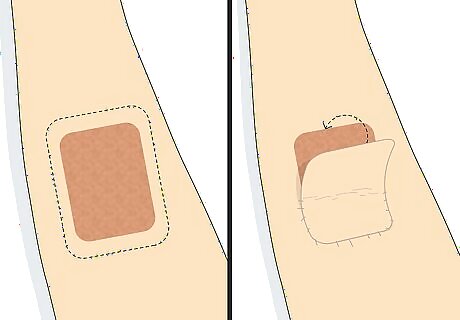
Remove deep scars surgically. If you have extensive, deep scarring, you may be a good candidate for a skin graft. In this procedure, a surgeon will remove a layer of skin from a healthy area of your body and use to cover the scarred area of your arm. The process can be somewhat painful and requires a recovery period of several months, but it may be worth it if your scars are severe. If you have a skin graft, you will likely have a few new scars after it heals. However, they may be less noticeable.




















Comments
0 comment